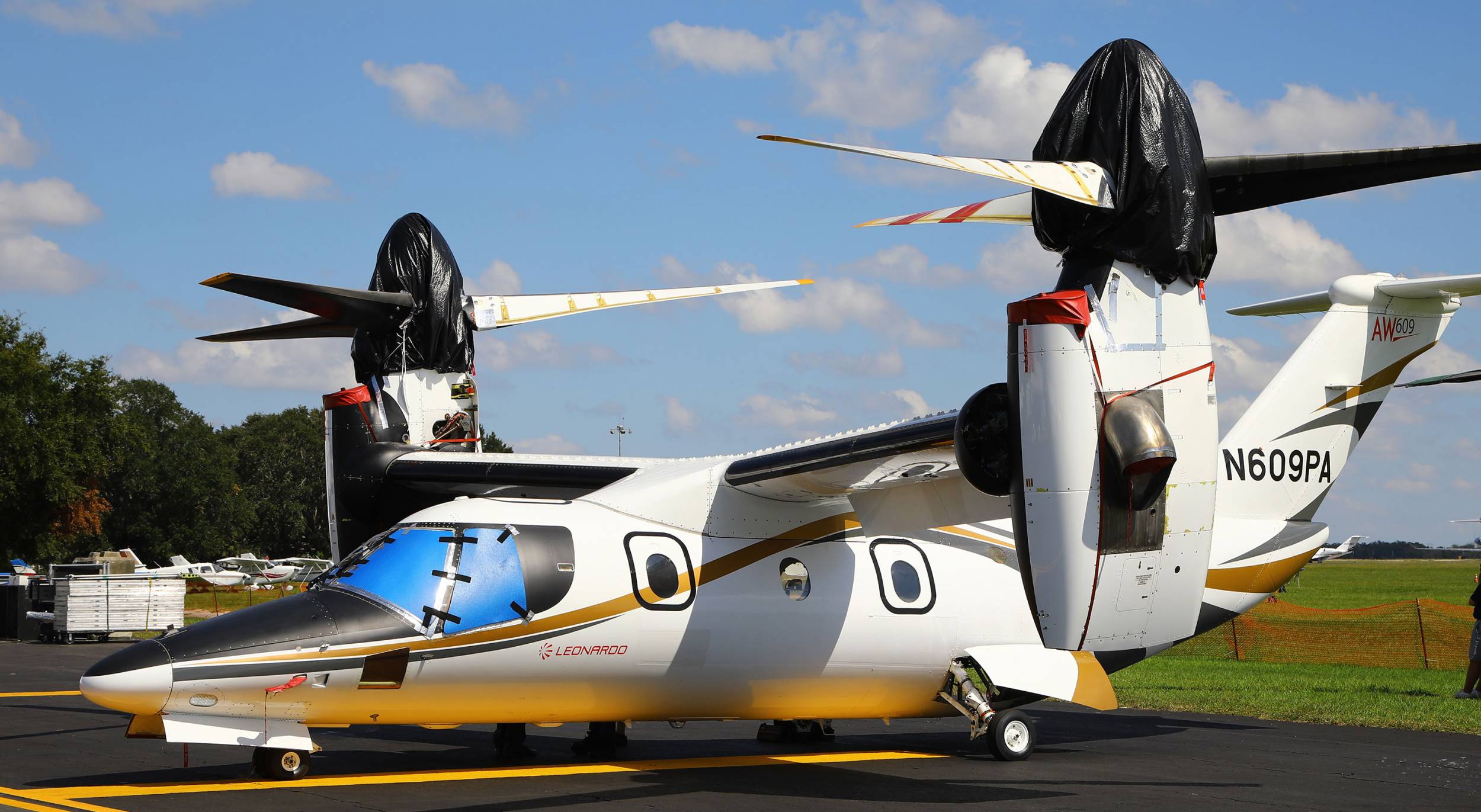Click Here to View This Page on Production Frontend
Click Here to Export Node Content
Click Here to View Printer-Friendly Version (Raw Backend)
Note: front-end display has links to styled print versions.
Content Node ID: 420035
The FAA is seeking public comments on its proposed certification criteria for Leonardo's AW609 tiltrotor aircraft. The U.S. regulator's request, which was published on June 9, comes some 20 years after the aircraft first flew in 2003, with Leonardo having applied for type certification 11 years ago in 2012.
From the published proposals, it appears the FAA intends to certify the AW609 as a special class aircraft under FAR 21.17 (b) and before issuing formal powered-lift airworthiness standards. The consultation process will run through July 10.
The new powered-lift standards are widely anticipated in 2024 and will largely impact new eVTOL aircraft for which manufacturers are urgently seeking a path to type certification. Ahead of that, the FAA is announcing applicable regulations and other airworthiness criteria developed specifically for the AW609 that include applicable parts of certification standards for both helicopters and fixed-wing aircraft under FAR Parts 23, 25, 27, 29, 31, 33, and 35.
“The proposed certification basis incorporates by reference existing transport category airplane and rotorcraft standards, one normal category airplane standard, Category A rotorcraft standards, optional Category B rotorcraft standards, and criteria for operation under instrument flight rules," said the FAA in a summar of the proposal. "This certification basis is not established for flight-into-known-icing conditions.”
Additionally, the FAA will apply modifications of existing certification standards to the AW609 under the newly-designated “tiltrotor criteria.” This will combine elements of Parts 23, 25, and 29 “as the maximum weight of the Model AW609 exceeds the weight for normal-category rotorcraft and most Part 23 airplanes, but its passenger seating is less than that of a transport-category airplane or rotorcraft.” The FAA also developed tiltrotor criteria because "no existing standard captures the powered-lift's transitional flight modes.”
Since Leonardo started work on the AW609's type certification, it has received multiple extensions for what is typically a three-year process. The aircraft was originally conceived by Bell as an experimental tiltrotor model, with the company subsequently launching a joint program with Boeing. When the latter pulled out of the project, Leonardo (then trading as AgustaWestland) stepped in, and subsequently assumed overall control with Bell's role now confined to some contract work.
Leonardo has previously confirmed plans for a so-called Next-Generation Tiltrotor but the status of this work is unclear. In 2021, the Italian aerospace group said it is also working on a hybrid-electric helicopter project. It is currently supporting UK start-up Vertical Aerospace by building the fuselage for the prototype of its VX4 eVTOL aircraft.
